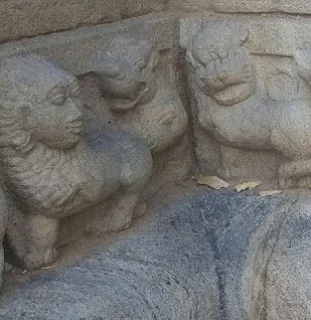NARTHAMALAI – THE EGYPTIAN CONNECTION
Narthamalai – a small village now, was a major trading center under the Muttaraiyar Kings, Vassals of the early Pallava’s and Pandya’s (7th to 9th century CE) and later came under the influence of the medieval Chola’s under Vijayala Chola during the last decade of 9th century CE. Narthamalai perhaps is named after the trading community Nagaratthar (Nagaratthar – Malai) also known as Nattukottai Chettiyar’s even now.
Did the Nattukottai Chettiyar’s have an Egyptian connection? Did they have trade links with Egypt in the 7th century CE or before. Did the merchants & artisans of Narthamalai visit Egypt?

The artisans from the reign of Muthuraiyars, seem to have been to Egypt, in order to have come out with a small frame in the walls of the Big Shiva Vishnu cave, with a sculpture similar to the “SPHINX”. The Human face with a Lions body.
The same is well engraved in a chain of Yalhi’s, consisting of Simha – Lion , Gaja – Elephant , Makara – Crocodile , Ajah – Ram and seems to be unique, on the pedestal of the Mukhamandapam.





Comments
Post a Comment